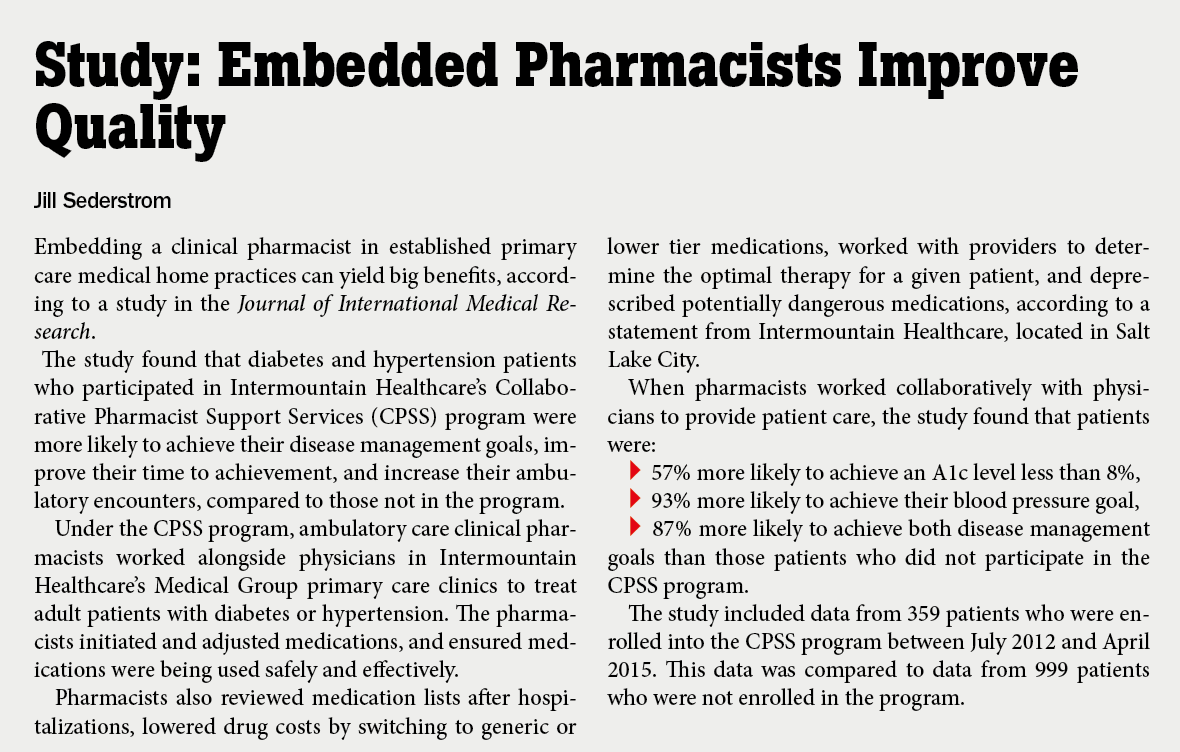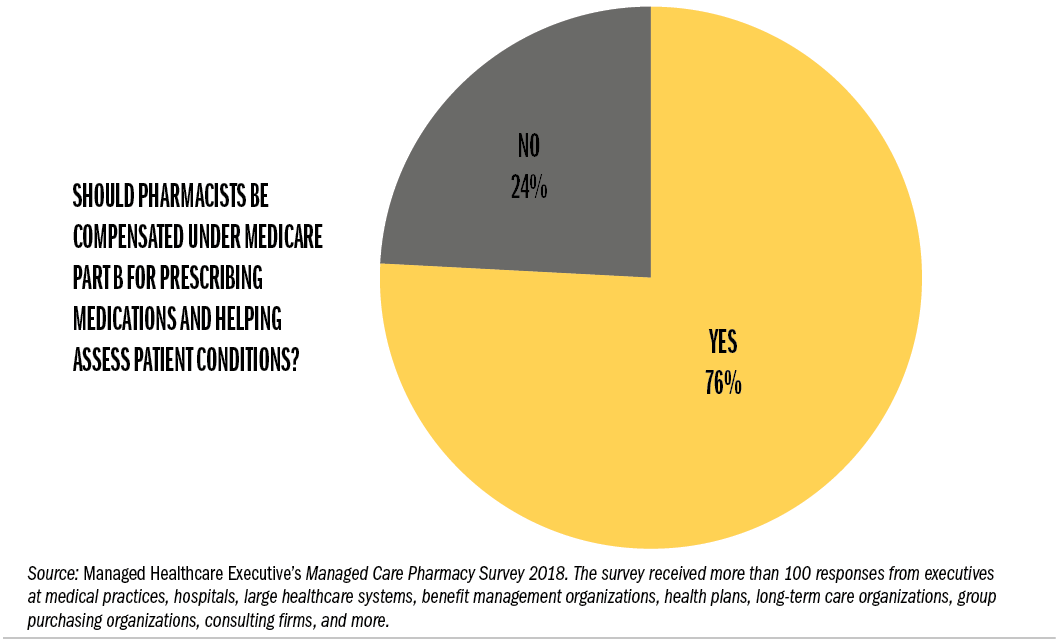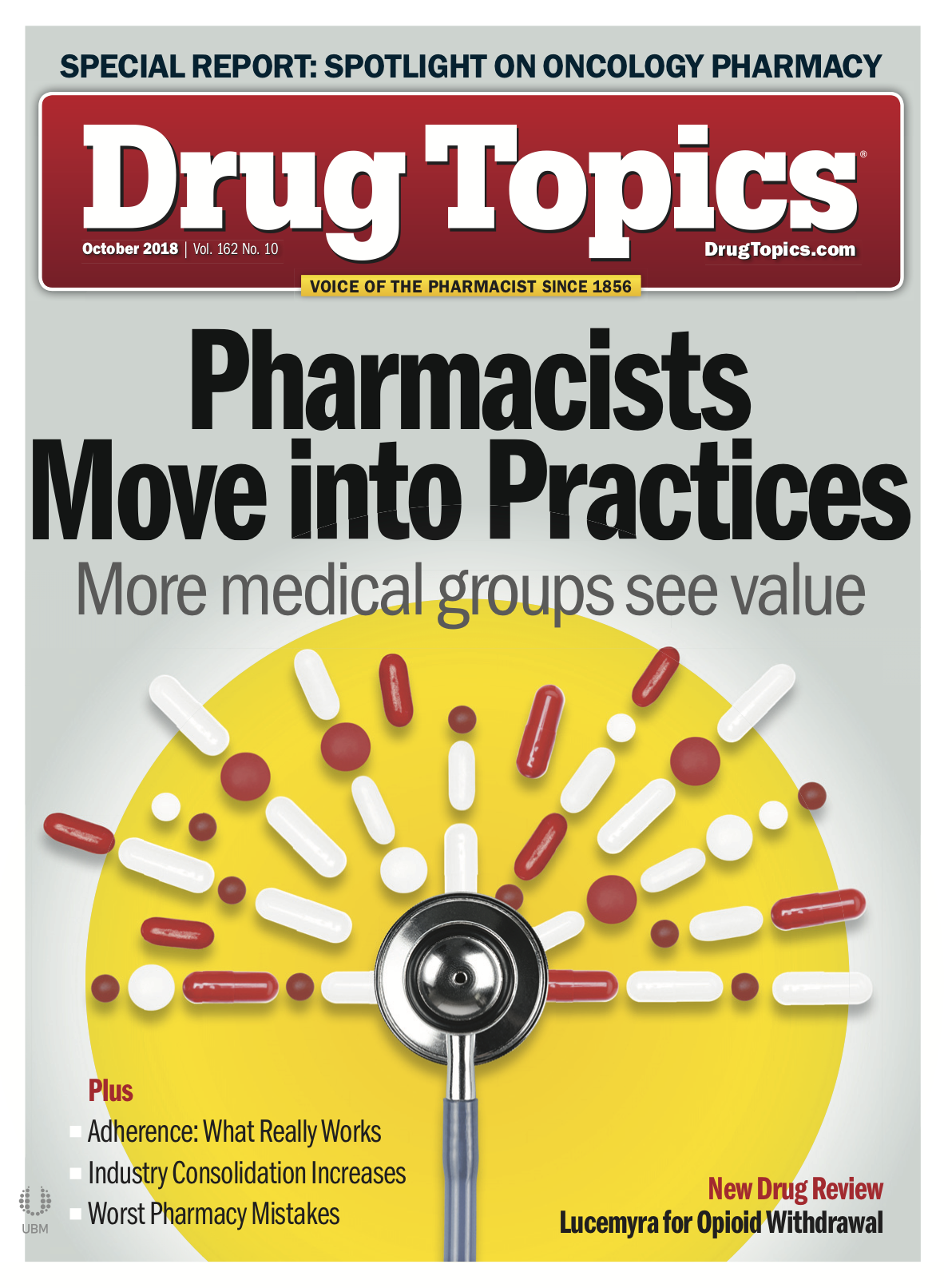More Pharmacists Move into Medical Practices, More Doctors See Value
Just as hospital pharmacists have moved out of the basement and into direct patient care, outpatient pharmacists are moving out from behind the counter and into medical practices. Here’s what’s driving the trend and how it could impact you.

Click to expand

Just as hospital pharmacists moved out of the basement and into direct patient care in the 1980s and 1990s, outpatient pharmacists are moving out from behind the counter and into medical practices.
“There is a demand for pharmacists from the physician side in ambulatory care,” says Elizabeth Cuevas, MD, director of the Primary Care Transformation for Residency Clinics at Allegheny Health Network, a nonprofit eight-hospital academic medical system with facilities in Western Pennsylvania and Western New York. Allegheny is putting pharmacists into about 250 different practices that are part of its accountable care organization (ACO), a payment model in which the health system receives higher reimbursement if it improves quality and reduces costs.
Related article: Pharmacists Get Involved in Direct Patient Care
“We’ve used our pharmacists for improved medication management, medication reconciliation, patient education and outreach, symptom management, disease management, and making sure patients are actually taking their meds,” says Cuevas. “Pharmacists have a natural role in practices.”
Allegheny isn’t alone in placing pharmacists in physician practices and ambulatory care clinics. Integrated health systems and larger group practices nationwide are moving in the same direction.
In the ideal arrangement, pharmacists are embedded in practices with 5 to 10 physician and nonphysician practitioners, explains John Kennedy, MD, chief medical officer of AMGA, formerly the American Medical Group Association. “For smaller practices or areas that may be more remote, you can use telemedicine or share remote [pharmacist] support as long as you have a shared electronic health record.”
Allegheny is using embedded pharmacists and shared services, depending on the size and location of the practices. Practices with one or two providers usually can’t support a full-time pharmacist, but they can benefit by sharing the services of a pharmacist, according to the health system.
A group of small practices that are relatively close to each other might share a pharmacist who rotates through the different offices, for example. More distant locations might do better with video and data links to a central pharmacist.
Either way, pharmacists are part of the care team and their salaries are covered by the practice. Regardless of the specific arrangement, the goal is the same-to incorporate pharmacists into team-based patient care.
Starting in the Hospital
Allegheny’s decision to put pharmacists on patient care teams can be traced back 30 years, to when inpatient physicians began working with clinical pharmacists. Then, Michael Korczynski, PharmD, BCAP, came on board as manager for Clinical Services, Pharmacy – Ambulatory Care.
“I had come from Kaiser Permanente and the VA, so I was familiar with an autonomous role for pharmacists,” Korczynski says. “But it was a foreign concept here.”
Even so, in the years before Korczynski started at Allegheny, its physicians and pharmacists had built up a strong relationship working together on the inpatient side, he says. “I started an anticoagulation service and working with a primary care practice. Physicians quickly latched onto the new-to-them services.”
Related article: Two Crucial Skills Pharmacists Will Need to Succeed in the Future
Changes in physician education also helped foster physician acceptance of pharmacists on care teams, says Kennedy. Most younger physicians train with pharmacists on inpatient care teams. Once they join a practice, they expect the same access to a medication specialist, he says. Practices and health systems that can offer a pharmacist in the office have a hiring advantage as the physician shortage grows.
What Pharmacists Offer
Putting a pharmacist in the office brings quality and financial advantages, which is critical in value-based reimbursement models, such as Allegheny Health’s ACO.
Click to expand

“Like all things in healthcare, it is about the dollar,” says Paul Lebovitz, MD, vice chair of the Allegheny Health Network Medicine Institute. “The present model, which is physician-centric, is not getting us to that quadruple aim of better outcomes, lower costs, better patient satisfaction, and improving the work life of our healthcare providers. We are moving to a patient-focused model using team-based care. Pharmacists are an important part of the team and the model.”
Related article: Prescribing rights: Worth it?
Eric Maroyka, PharmD, BCPS, director of the Center on Pharmacy Practice Advancement at ASHP, says placing pharmacists in the primary-care setting ensures care is provided in the most cost-effective location. “We are seeing care moving toward a more preventative model and not just episodic acute care,” he says. “The sickest of the sick will be in hospitals. Anything that can be done on an ambulatory care basis will be done that way and that is where the maximum payment will be.”
A single physician cannot provide the same quality of care as a team that incorporates a pharmacist, says Lebovitz. “I have made a significant impact with patients, but I recognize that there is so much more I could have done with help,” he says. “That’s what this transformation of care is all about.” Patients have better outcomes in team models, he says, because there are more eyes on the patient from the entire team.
Pharmacists also can lower costs of administering services, improve physician efficiency, and curb physician burnout, says Lebovitz. Anything pharmacists and other team members can take off the physician’s plate saves money and gives physicians more time to spend with patients.
“It doesn’t take physicians long to recognize that team-based care makes their lives easier,” Lebovitz says. “They realize they are no longer responsible for everything, there are other team members who can and should be doing specialized activities. It allows our physicians to work at the highest level of their training. That makes their life better.”
Helping physicians work at the top of their training also benefits pharmacists. They are information resources, not dispensing resources, Maroyka says. Pharmacists managing patient medications or developing opioid stewardship for the practice are working at the top of their training, which boosts job satisfaction.
Make Your Case
Pharmacists working with clinics or practices is new territory for both pharmacists and physicians. Arrangements could be as formal as a full-time medication specialist in the practice or as flexible as a few hours of telephone consultation as needed. Either way, working more closely with clinics and practices begins with physician awareness.
Physician practice and clinic leaders may not know what pharmacists can do for them. For example, they may know that up to half of new scripts for chronic care meds are never filled; they may not know that pharmacists can help patients start to use their meds.
The key is talking with physicians about practice problems, then showing how pharmacists can address them. The whole discussion is about improving outcomes, reducing costs, and boosting satisfaction, Korczynski says.
Pharmacists looking to start these discussions can consult ASHP’s sections for ambulatory care practitioners and pharmacy managers, which can provide hands-on information for pharmacists interested in working with practices.
Related article: How to Get Paid for Pharmacy Services
Another resource is the American Medical Association’s physician practice improvement strategies: STEPS Forward. For information on how and why to embed pharmacists in practices, visit their website.
AIMM, the Alliance for Integrated Medication Management, is another resource. AIMM, Apexus (the HRSA-designated Prime Vendor for the 340B drug pricing program), and ASHP sponsor the A3 Collaborative. The year-long program helps provider organizations such as Allegheny create value-defined initiatives to build population management strategies by implementing clinical pathways that integrate medical care and comprehensive medication management services.
Click to expand

“Practices are seeing more and more pressure to account for outcomes,” says Todd Sorensen, AIMM executive director. “That changes the whole focus from quantity care to quality care.”
Reimbursement Challenges
The lack of provider status isn’t keeping pharmacists out of ambulatory care clinics and medical practices. But more pharmacists would be in more practices if they were recognized as providers and could bill directly.
“Not having provider status has an impact at the executive decision-making level on whether or not to hire a pharmacist for the practice,” says Kennedy.
When the pharmacist cannot directly bill for services and generate revenue, the practice must find other ways to support the role. That usually means looking at cost savings, which may not appear until the second or third year. That lag can slow adoption.
“Right now, the system is paying for pharmacists in practices,” says Cuevas. The need to demonstrate a return on the pharmacist investment is slowing pharmacist hiring.
Though Allegheny Health is in the process of adding pharmacists to 250 practices, they currently only have them in a handful of clinics, Cuevas says. “The pharmacist is not able to bring in direct revenue, but you can see a decrease in 30-day readmissions, a decrease in morbidity, a decrease in ER admissions because you have a pharmacist doing medication management and reconciliation. It is a matter of recognizing that the costs you are saving are different from direct billing.”
Pharmacy organizations are pushing for provider status at the federal and state levels, but that alone isn’t enough. Legislation must also allow pharmacists to bill at realistic rates.
“There is literature showing that when pharmacists are allowed to bill at higher levels, they can generate revenue to cover their salaries,” says Korczynski. “If the rules say pharmacists are providers, but they can’t bill at higher levels, provider status won’t help.”
Related article: DIR Fees: Just One of Many Reimbursement Battles
Commercial payers are part of the picture as well. Change is coming, but slowly.
“Direct billing for pharmacy care out of medical practices is still in its earliest stages,” says Keith T. Kanel, MD, MHCM, clinical associate professor of medicine at the University of Pittsburgh School of Medicine. He was principal investigator for the Primary Care Resource Center Project. The CMS Innovation center project put pharmacists in primary care practices in parts of Pennsylvania and West Virginia. The project, which began in 2012, showed a 25% reduction in 30-day hospital readmissions and reduced 90-day costs of care by more than $1,000 per patient.
“Forward thinking commercial plans are beginning to develop ways to pay for an office-based pharmacist,” Kanel says. “That is going to become a game changer when it becomes more common.”
